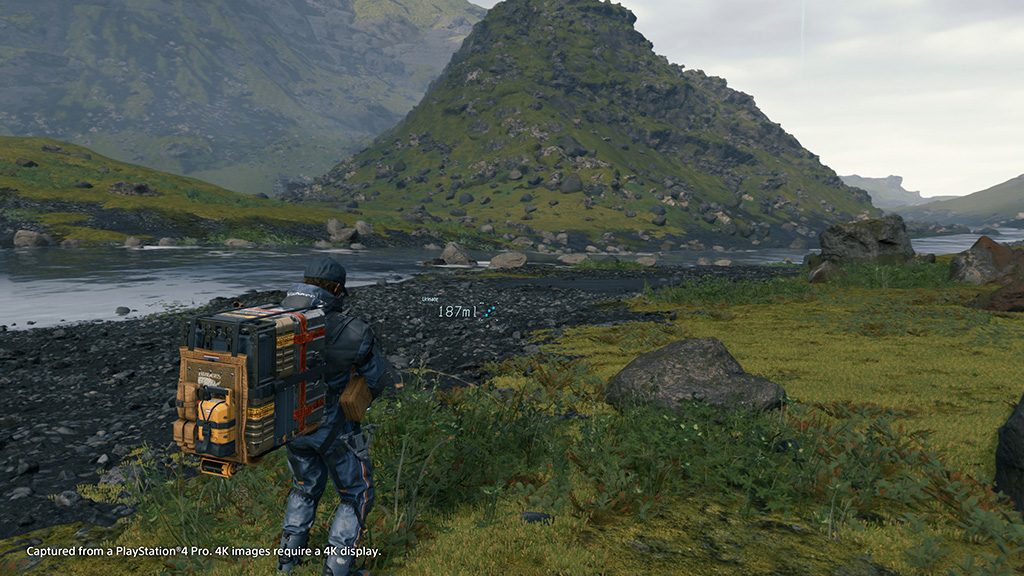Enjoying a game like Death Stranding can be hard. There are many factors that come into play – how much time are you willing to give it before you get that sense of gratification, how much of a Kojima fanboy/girl you are to hand him the complete reigns over the 50 hours or so that you will be spending on the game, and basically how open you are to trying out a game that’s unlike anything you’ve ever played. It’s not really an action game though there’s some action in it. It’s not a walking simulator though walking is what you do most of the game. It’s simply Hideo Kojima’s storytelling style unleashed without Konami’s reins holding him back.
Profound as that may sound, that’s been the whole pre-launch tone of Death Stranding all the way to the final launch trailer. Even when you play the game, it takes a good five hours or so before you can even begin to understand what this post-apocalyptic world is about. Supporting characters in the game are a part of your journey where they too discover more about the world as you progress in your adventure, so there’s always some mystery at hand and not everything is clarified all the way to the end.
As to what it is that you do in the game, well, you’re basically a glorified courier guy with a special ability called Dooms. America is no longer the USA, but you can help achieve the goal of connecting it through an advance ‘Chiral Network’, which is a form of high bandwidth futuristic Internet that can even transport materials over its network. With your help you can finally connect the new UCA or United Cities of America – since humankind is reduced to small pockets of existence.
But it isn’t all that simple. There are many hostile forces that come in your way – such as Homo Demens, which is a terrorist group who are opposed to the idea of a UCA. Then there are the mysterious spirits called BTs, which is short for Beached Things. You will also often encounter the time altering rain called Timefall, which rapidly ages anything it touches. The terrain itself is not easy to get though at least in the initial portions of the game. Most roads and civilised constructions are gone, and you’ll have to navigate through a very rough terrain to get to your destinations – all while carrying incredibly heavy loads on your back.

And that is the grind that can be considered as the biggest put-off of the game. Traversing on foot requires you to keep a constant check on your balance, stamina, health and the condition of the packages that need to be delivered. But to be fair, that’s a very skewed perspective of looking at what Death Stranding is all about. Besides the motivation and the curiosity of what awaits you at the next base station, the landscape itself is ever evolving, not just with the challenges, but also thanks to the asynchronous multiplayer contributions from other players. The landscape is scattered with helpful items and pods that will offer you assistance and resources along the way. The positive reinforcement also plays a big role in keeping you going on a task that could otherwise be potentially mundane and grueling.
Hideo Kojima unleashed his mad genius into every aspect of the game, which is why you end up finding humour in the unlikeliest of events. Be it the names of some of the supporting characters – Dead Man, Die-Hardman, Fragile, or even in some of the game’s base dynamics like making BT-repulsing grenades out of your bodily waste. The game’s protagonist Sam Porter (played by Norman Reedus), often breaks the fourth wall and reacts to your actions. For example, you focus the camera at his crotch for too long in the resting area, and you’ll end up getting punched in the face by him. It’s little things like these that set the earlier Metal Gear Solid games apart from other stealth action games, and players will enjoy doing off-plot activities here as well.
Visually, Death Stranding is surprisingly gorgeous. The world starts off as a sparse grassland with no coherent plants to speak of, and as you travel you discover different areas with vegetation, landscapes and even snow. All off it is excellently detailed and if you’re playing it on the PS4 Pro on a 4K HDR TV, then it’s one of the best visual experiences on the platform till date. The game doesn’t have any generic NPCs (beyond the Homo Demens), so every character has a different personality and, in most cases, a genuine actor behind it. Besides Reedus, there’s Mads Mikkelsen, Tommie Earl Jenkins, Lea Seydoux, and even Conan O’Brien. The mocapped animations are strikingly realistic all the way down to the eye movements, which are incredibly lifelike. Nothing seems to have gone missing from what the actor portrayed and what we got to see in the game, which is a feat.
High production value, a long and often engaging journey, and a steep learning curve that’s full of trial and errors await you in Death Stranding. Answering your questions or even presenting logic is not the game’s highest priority, but there’s more than enough lore to interpret if you seek it. The big question is – are you willing to dedicate the massive time investment it needs to slowly unravel its layers?
